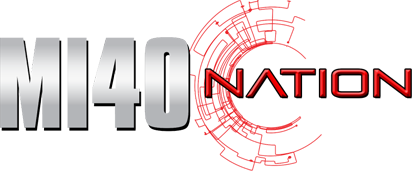Showcasing Your Physique – A Guide for Maximum Impact in 7 Days
The line between success and failure come showtime is notoriously small. As many competitors will tell you, the final 7 ...

The line between success and failure come showtime is notoriously small. As many competitors will tell you, the final 7 ...
Despite our muscle gains and the conditioning we are able to achieve, many of us remain unhappy with our physical ...
Of the major neurotransmitters, acetylcholine just might be the most important from a muscle building standpoint. As a major neurotransmitter ...
Most hard working bodybuilders, from rank beginner to seasoned pro, will experience some degree of training-related muscle soreness. Whether experienced ...
Mention the term ‘steroid hormone’ to most beginner bodybuilders and they may assume you are talking about the most coveted ...
In their eagerness to increase strength and build muscle, most devoted iron trainees will ceaselessly pound down the protein, carbs, ...
Carbohydrates always seem to be a hot topic when it comes to losing fat or building muscle – or both. ...
Even a slight vitamin deficiency can halt muscle gain in its tracks... the scary thing is, you're probably deficient already! ...
Today I drove to the gym today heading into my first leg day of the week. My current training protocol ...
Bodybuilders, and indeed all athletes looking to secure the performance edge would have at least a passing knowledge of the ...
Bloated stomach? Endless flatulence? Wicked diarrhoea? Believe it or not, you don’t have to live with these symptoms. Ever wonder ...
A new year has begun and now is the time to carve off that holiday excess. As fans of this ...
Where does hypertrophy training fit into a strength athlete’s training cycle?
For strength athletes, or for those who just want to get stronger for that matter, the majority of information leans itself towards meet peaking/meet prep training cycles. But that is only a piece of the puzzle. The use of hypertrophy training during the off-season builds certain qualities that help to lay the foundation for the sequential phases of training ahead. These phases are programed to enhance specific qualities so that we can improve certain capabilities later.
In the book Scientific Principles of Strength Training (Israetel et al. 2015) the science of getting stronger can be built on 7 fundamental principles
> Specificity
> Overload
> Fatigue Management
> Stimulus-recovery-adaptation
> Variation
> Phase Potentiation
> Individual Differences.
One fundamental principle that strength athletes often neglect is the principal of phase potentiation.
Too many athletes train too heavy for far too long, causing staleness, plateaus, a decrease in strength, or worse yet injury.
In this article I want to define what phase potentiation is, and how using this principal along with hypertrophy principals can lead to new strength gains down the road. This article should also give you a better understanding of what strength training should look in a properly planned program. After we define some terms and how they work I will show you how I am using them in my current training program.
Phase potentiation
Phase potentiation is the concept of developing certain qualities that will play a major role in future phases of training. Each phase builds upon one another by adding greater “potential” for growth, and improvement in the following phases of training (Israetel et al. 2015).
Where does hypertrophy training fit into all of this?
Skeletal muscle fiber types range on a spectrum from fast-twitch to slow-twitch types. Fast-twitch muscle fibers produce force rapidly when activated by the nervous system, but more importantly they produce more force per cross-sectional area and they are much bigger than the slower twitch fibers to begin with (Israetel et al. 2015). This is due to the fast twitch fibers ability to experience more damage from training, thus they tend to hypertrophy “more readily” (Zatsiorsky and Kraemer 2006).
(Yes, I know both fiber types can and will hypertrophy.)
With this we can draw a conclusion:
Muscle size directly causes strength expression by supplying the machinery for muscle contraction (Zatsiorsky and Kraemer 2006). There is more potential for strength gains in an athlete who has a large amount of lean muscle mass.
Direct Adaptation: As stated in Scientific Principles of Strength Training: with Applications to Powerlifting, this is the idea of “use it or lose it”.
Too many athletes are haphazardly going into the gym doing reps and sets not knowing what qualities (strength or hypertrophy) they are working on. Directed adaptation states that we need to be improving a certain quality with a sequential and continuous presentation of specific stimuli for maximal enhanced outcomes (Israetel et al. 2015) (Zatsiorsky and Kraemer 2006). That is, if we are training to get big, we are training to get big.
For example; if you are training legs twice a week, you would not squat sets of 10 one day, and then later in the week try to hit a new 1 rep max. This comes from our physiology. Our bodies only have a certain amount of adaptation capacity, and we are quite limited on how many qualities we can improve at once. How long these adaptations can be retained is proportional to how long the training stimulus was consistently and sequentially applied (Israetel et al. 2015) (Zatsiorsky and Kraemer 2006).
What?
 1) If we are training for hypertrophy, we are training for hypertrophy, there is no need to test your maxes or take off running a marathon.
1) If we are training for hypertrophy, we are training for hypertrophy, there is no need to test your maxes or take off running a marathon.
2) Not only are we distinctly training for hypertrophy we are going to train for hypertrophy for some length of time, not this week hypertrophy and next week we will run and take maxes.
3) The longer we train for hypertrophy, the longer we keep our muscle mass with a cessation of training. The longer your phase of training for a certain quality (hypertrophy or strength), the longer you keep it, even if you stop training completely. There is a finite length to how long you can train a quality, in general, once again I say, in general… 6 months (Israetel et al. 2015).
If you spend too long of a time training a certain quality there will be a plateau or decrease in performance in the quality being trained and a drastic decrease in the qualities that have not been stimulated at all (Israetel et al. 2015) (Siff and Verkhoshansky 2006). For powerlifters who train heavy year round and have not done a meet prep training cycle or any hypertrophy work, they will see a drastic halt in strength gains.
Bodybuilders are the same but on the opposite end of the spectrum – if they have not done a competition prep or strength training, the continuous progress in muscle mass will be minimal.
For both bodybuilders and powerlifters, doing a competition prep is a change in training stimulus, but both, highly specialized, well developed systems, would benefit from training the other qualities as long as time allows before the next competition.
There is a finite length to how long you can train a certain quality, there is also a minimum length you must do. To make sure you are presenting enough of a stimulus to the body causing an adaptation that will stay with the system, you need to train that quality for at least 3 weeks, in general.
These numbers sound exact?
Nothing is exact in strength training when it comes to sets, reps, and weight – all we have are general concepts and principals to guide us. The only exact thing we have is effort.
The best program with a poor effort will always lose to a poor plan with a great effort!
Check out Part 2 where you’ll learn exactly how you can apply this in your own training for maximum progress…